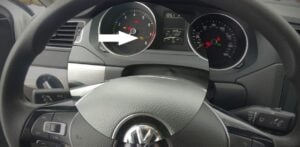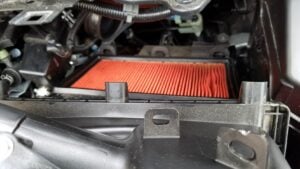Troubleshooting Porsche PSM Failure
Porsche vehicles are known for their precision engineering and performance, but even the most well-built cars can experience problems. One common issue that Porsche owners may encounter is a failure of the Porsche Stability Management (PSM) system. The PSM system is a critical safety feature that helps to improve the stability and handling of the vehicle, and when it fails, it can have serious consequences. In this article, we will explore the meaning of a PSM failure in a Porsche vehicle, the common causes of such failure, and troubleshooting steps that can be taken to fix the problem.
Porsche PSM failure message and warning light may come on after changing the battery or when the check engine light comes on. We will discuss the importance of timely maintenance and repair to ensure the PSM system is always ready to protect you and your vehicle. Whether you’re a Porsche enthusiast or a new owner, this guide is designed to provide valuable information and help you make informed decisions about the safety of your vehicle.
What Does PSM Failure Mean on a Porsche?
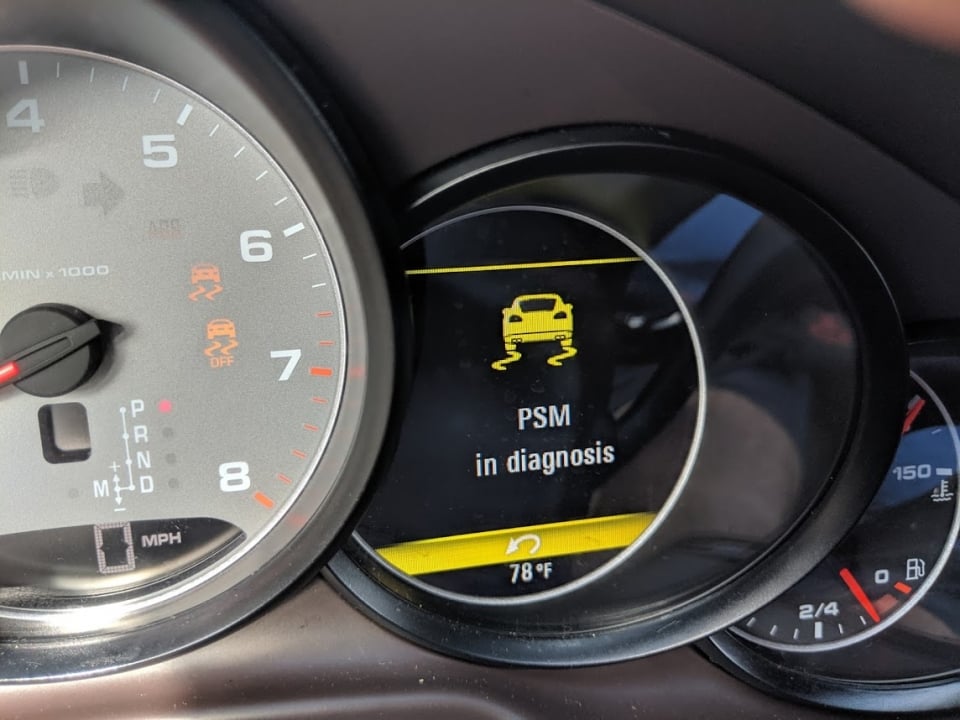
The Porsche PSM light may come on due to something as simple as low tire pressure or low battery voltage, but in most cases, it is due to a bad ABS wheel speed sensor. It is common for the light to come on after you replace the battery.
The problem must be diagnosed with a Porshe OBD-II scanner, but if the cause is a bad ABS wheel speed sensor, the ABS light and warning also come on. In some cases, even the check engine light may come on.
It is also not uncommon for Porsche PSM failure warning messages to pop up during freezing weather or heavy rain conditions. In such cases, restarting the vehicle will typically reset the PSM light. PSM failure may occur in Porsche Cayenne and Panamera. If the PSM light comes on after replacing the battery, drive your Porsche for ten minutes, and the PSM light should reset.
Symptoms
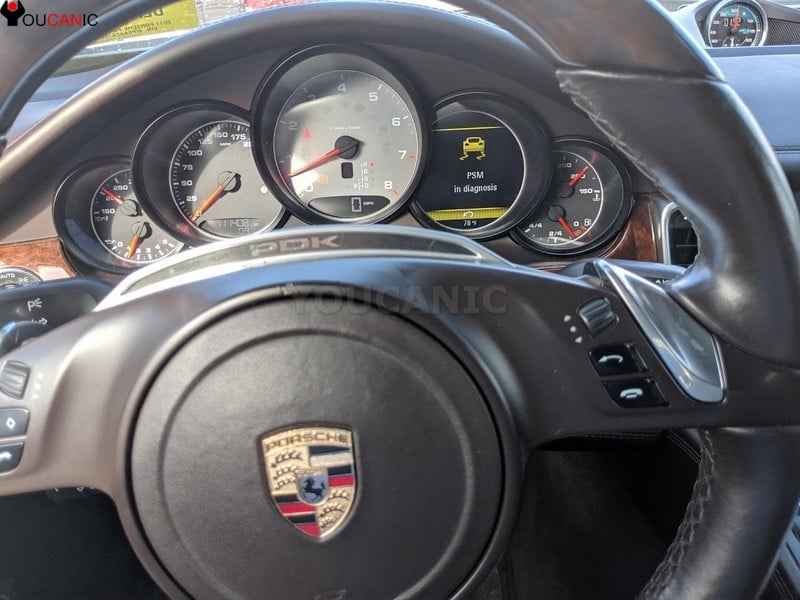
What you may notice when Porsche PSM fails:
- PSM failure warning message on the dashboard
- Auto-stop/start mode deactivated, flashes.
- Sport mode disabled
- ABS failure – See this article.
- PSM failure consults a garage. Driving permitted a warning message.
What Causes PSM Warning on a Porsche

Common problems that cause Porsche PSM failure.
- The wheel speed sensor is faulty.
- PSM software/hardware issue
- Throttle position sensor
- Lateral accelerator defective
- The brake light switch causes intermittent PSM failure. Even if the brake lights work, it may need adjustment or replacement.
- Yaw sensor
- Steering angle position sensor
- Battery
- Low voltage
- Replacement
- Loose contact
- Corroded ground
- MAF failure
- ABS module
- Low tire pressure
Start by reading the ABS / PSM module’s trouble codes to determine why your Porsche system failed.
How to Diagnose Porsche PSM problem

Porsche PSM failures can be diagnosed with a diagnostic scanner. The YOUCANIC Full System Scanner is an excellent example of an OBD-II scanner that can read and clear codes from all the systems in your Porsche.
What you will need
Procedure
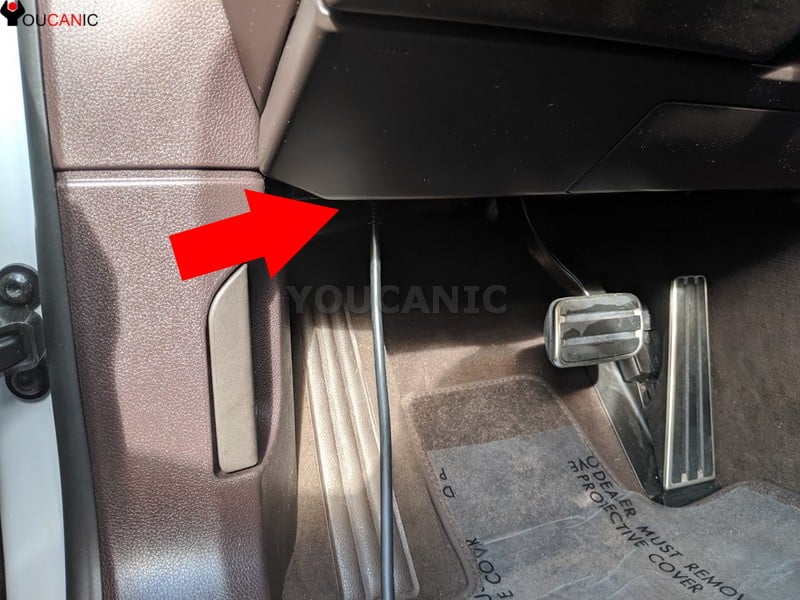
- Park the Porsche and set the parking brake.
- Locate the diagnostic port under the dashboard on the driver’s side and plug in your scanner.
- Turn on the ignition, but do not start the engine. If your Porsche has a start/stop button, press it without pressing the brake pedal.
- Turn on the scanner. Select Porsche and then your specific model.
- Scroll to the ABS / PSM module. Select READ FAULT CODES. Write down all the codes. If the codes are STORED / PAST, they can be cleared. If codes are in PRESENT / CURRENT / ACTIVE status, you won’t be able to reset the PSM light until you fix the problem.
Generic OBD-II scanners typically can’t read Porsche fault codes in the PSM and ABS modules. You will need a scanner to read fault codes from the PSM and ABS modules.
Troubleshooting
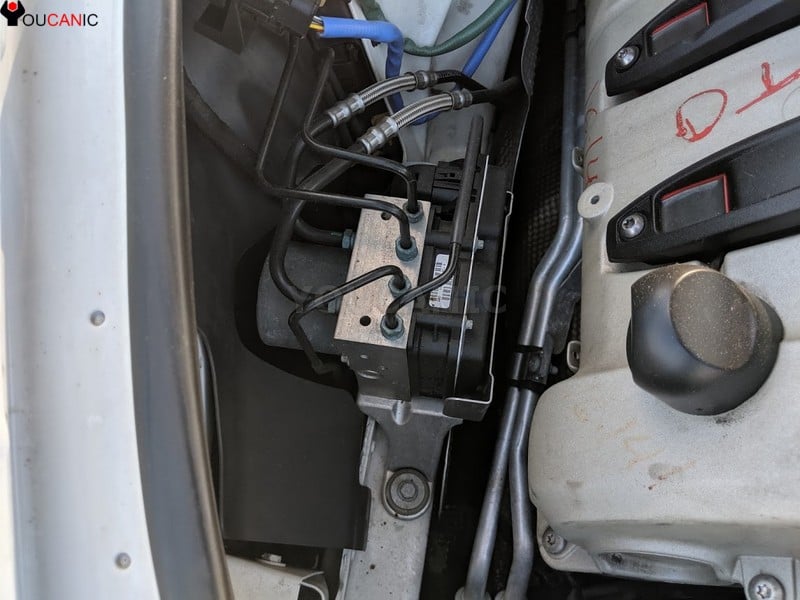
Diagnosing a problem with the Porsche Stability Management (PSM) system can be complex. It is best to perform it by a professional technician with the proper diagnostic tools. However, here is an overview of the steps that a technician may take when diagnosing a PSM problem in a Porsche vehicle:
- Check for diagnostic trouble codes (DTCs): The first step in diagnosing a PSM problem is retrieving any trouble codes (DTCs) that may have been stored in the vehicle’s control module. DTCs can be accessed using specialized diagnostic tools like a Porsche PIWIS tester.
- Inspect the vehicle’s sensor and control units: Once any DTCs have been retrieved, the technician will inspect the vehicle’s sensor and control units, such as the steering angle sensor, the yaw rate sensor, and the lateral acceleration sensor, to ensure they function properly.
- Check the wiring and connections: The technician will also check the wiring and connections for any damage or loose connections, which can cause a PSM failure.
- Check the control module: The technician will check the PSM control module to see if it functions properly.
- Road test the vehicle: Finally, the technician will road test the vehicle to see if the PSM system is working correctly and to identify any other issues that may be present.
It is important to note that PSM failure could be caused by various issues, from a simple wiring problem to a complex control module malfunction, so the diagnostic process can be pretty complex and time-consuming. Therefore, it is highly recommended that the vehicle be taken to an authorized Porsche dealer or a qualified technician with the proper diagnostic tools and knowledge to diagnose and repair the problem properly.
Conclusion
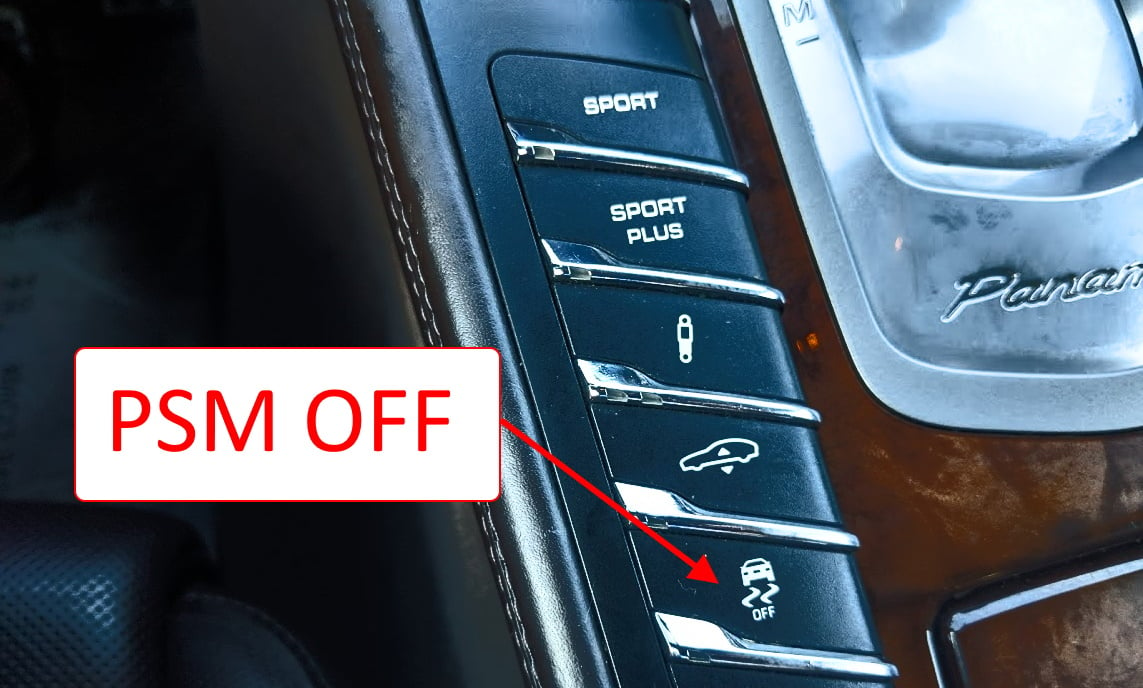
Porsche introduced the PSM system back in the late 1990s. Many models, such as the Panamera, Cayman, Boxster, 911, Macan, and Carrera, have PSM options. The PSM system on a Porsche assists the driver in keeping the vehicle on the intended track.
Porsche PSM system takes input from various sensors, which means the failure of any of these sensors will trigger a PSM warning message:
- ABS wheel speed sensors,
- engine RPM,
- gas pedal position,
- steering wheel position,
- lateral acceleration,
- current gear,
- yaw sensor.
PSM uses input from these sensors to determine oversteering, understeering, and loss of traction.
Under acceleration on wet or low-grip road surfaces, PSM improves traction using the automatic brake differential (ABD) and anti-slip regulation (ASR) – Porsche USA
You can turn off Porsche PSM by pressing the PSM Off button on the center console.
When you press the PSM off switch, the PSM system is not completely disabled. You may notice that the PSM light flashes if you start to push the vehicle too hard. In Sport mode, the PSM system will intervene less. To discover why you are getting a PSM error warning on your Porsche, read the fault codes using a Porsche OBD-II Scanner.





